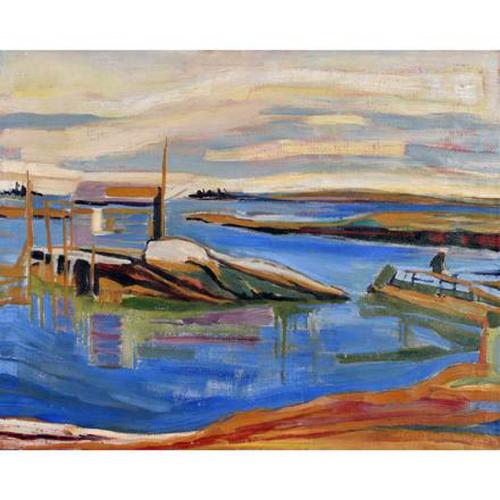

Price on application
This object is eligible for a Certificate of BADA Provenance
The BADA Standard
- Since 1918, BADA has been the leading association for the antiques and fine art trade
- Members are elected for their knowledge, integrity and quality of stock
- Our clients are protected by BADA’s code of conduct
- Our dealers’ membership is reviewed and renewed annually
- Bada.org is a non-profit site: clients deal directly with members and they pay no hidden fees
Cityscape Painting by Youla Chapoval.
Oil on Canvas.
Reference: (https://jeannebucherjaeger.com/artist/chapoval-youla/#:~:text=represented%20artists,Russian%20Revolution%2C%20to%20leave%20Ukraine.).
Born in 1919 in Kiev, Youla Chapoval was the third child of a bourgeois Jewish family of jewelers. After a happy childhood, Chapoval and his family were forced, as a result of the Russian Revolution, to leave Ukraine. They moved to Paris in 1924, as did many Russians who imagined France to be an ideal country of freedom and good living.
In November 1938 Chapoval met Pablo Picasso, with whom he would soon develop a close relationship. It was also during this period that he met Jean Cocteau, who would influence the development of his interest in poetry.
By 1942 he had moved to the rue du Faubourg St. Jacques, where he made the acquaintance of Jean Degottex and Apel Fenosa. Both vigorously encouraged him to draw and paint. Chapoval would choose to abandon medicene and literature in order to devote himself exclusively to painting, and would assiduously attend the Academie de la Grande Chaumière.
Meanwhile the political climate in Paris deteriorated. Following the Vel d’Hiv Roundup in 1942, Chapoval was forced to take refuge in the “free zone” in Marseille, where he studied at the École des Beaux-Arts. In Marseille, he met the art critic Roger van Gindertaël, who would play a decisive role in his career. His early works, executed between 1942 and 1945, were characterized by a figurative and realist style, close to fauvism, based around portraiture, landscape and still life.
In 1944, upon his return to Paris, he learned of the death of his mother and his older sister, who had been deported to Auschwitz.
1946 would see an important new stage in his development. He met Henri Benezit, an art dealer who acquired some twenty of his canvases, and introduced him to the great collector Roger Dutilleul. His artistic expression veered towards new forms of cubism, with more structured compositions determined by geometric schema in which shadow and light play with the harmony of colors. In his work from this period one can discern the influence of Juan Gris, Albert Gleizes and André Lhote.
After Chapoval took 2nd prize in the Prix de la jeune peinture in May 1947, the Jeanne Bucher Gallery organised his first solo exhibition in November of the same year. It was one of the very first hangings done by Jean-Francois Jaeger, great-nephew of the gallery’s founder.
Roger van Gindertaël wrote an introductory text on the invitation card, thus taking up the tradition of dialog between artists and poets. He placed Chapoval between figuration and abstraction, and concluded by writing “Chapoval, without a vain metaphysics, reserves for himself the part of poetic–or mystical– feeling, which remains the ultimate raison d’etre of painting”.
A cohort of amateurs gathered at the Boulevard du Montparnasse, among them Jacqueline Auriol, daughter-in-law of the recently elected President of the Republic, and Georges Pompidou, who acquired his first abstract work, “Bière moussante" presented in the exhibition. The French government acquired two works, “Nature morte au citron" and Verre et cristal".
1948 would see the birth of his first abstract compositions, punctuated by long diagonals. His use of shaded monochromes, and the appearance of warm grey, blue, and/or green tonalities, confer luminous subtleties onto these works.
1949, although clouded by the death of his father and his divorce, was the year when Youla Chapoval would finally know great success. Recognition would come in the form of a second solo exhibition at the Gallery, inclusion in the Salon de Mai and the Salon des Réalités nouvelles, and the winning of the Kandinksy prize. In canvasses from this year, circular and geometric shapes drown in warm colors.
1950 saw a new evolution of the artist through contact with Charles Estienne and Hans Hartung. The precision of forms gave way to a freer movement of the brush.
Dimensions
Canvas 10-3/4"h, 18-1/4"wStock number
NY09419The BADA Standard
- Since 1918, BADA has been the leading association for the antiques and fine art trade
- Members are elected for their knowledge, integrity and quality of stock
- Our clients are protected by BADA’s code of conduct
- Our dealers’ membership is reviewed and renewed annually
- Bada.org is a non-profit site: clients deal directly with members and they pay no hidden fees



